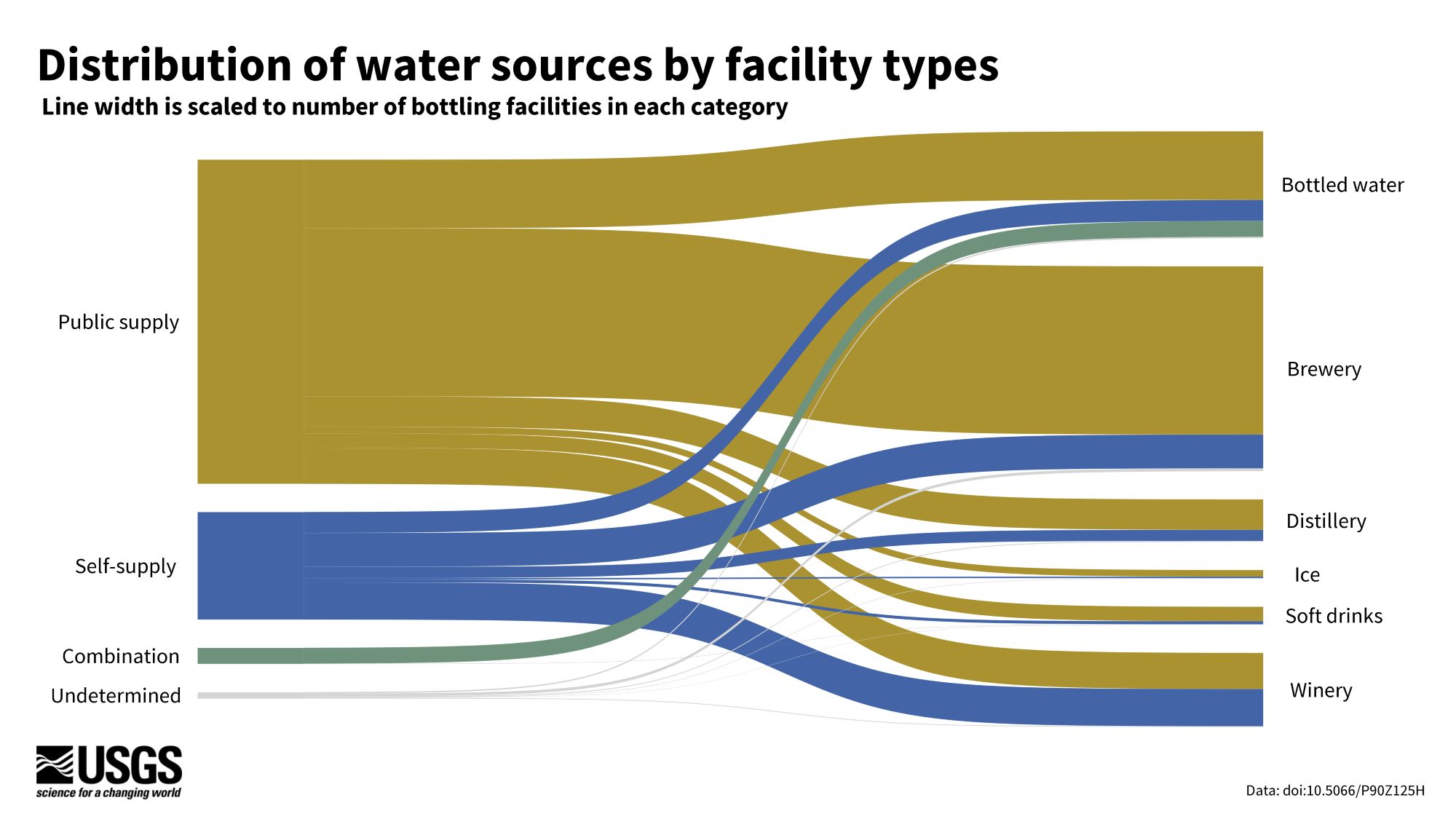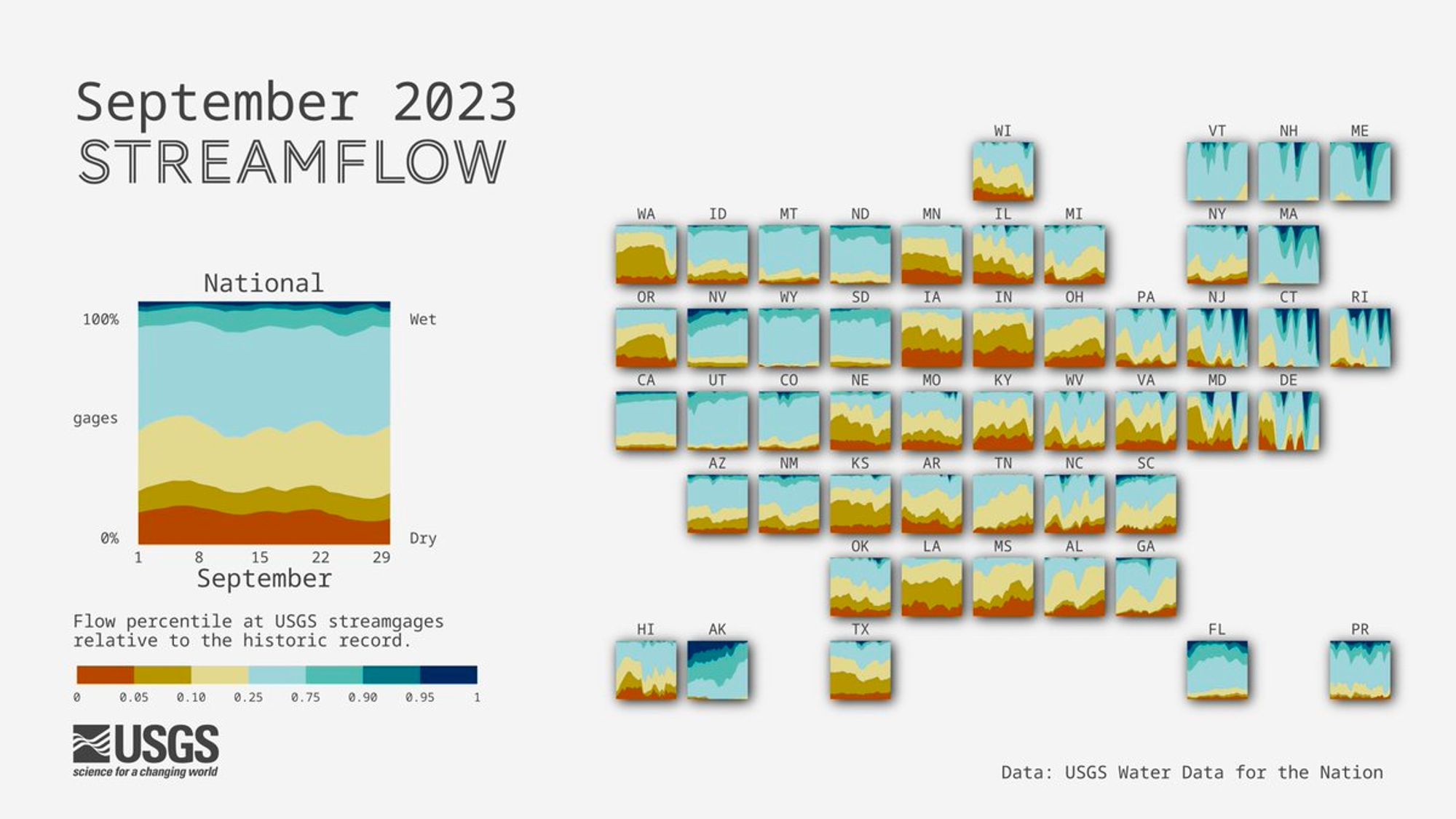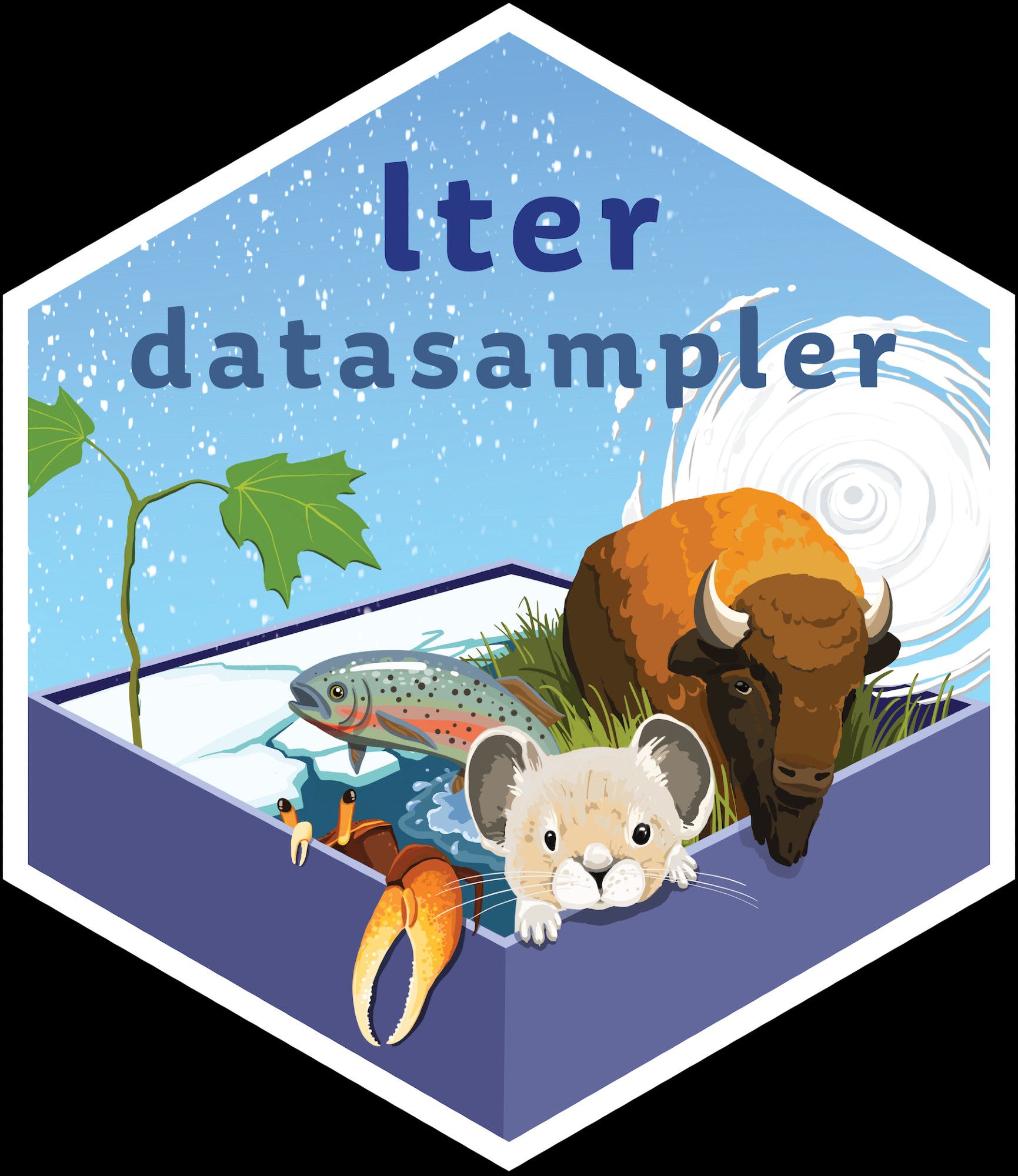
Public supply is the source of water for many beverage facilities, but water source varies by facility type. Here we show water sources across facility type for the U.S. where line thickness is scaled to the # of facilities in each category. Learn more at: labs.waterdata.usgs.gov/visualizatio...

Access the inventory and water use data here: www.sciencebase.gov/catalog/item...
Learn more about water availability impacts from extraction of water for bottling with next steps including regional assessments and changes to local groundwater and water quality: www.usgs.gov/mission-area...
September #streamflow conditions across the U.S. 💧 Dry conditions persisted across much of the U.S., while parts of New England saw wet conditions. 📊🌎 made with #rstats github.com/DOI-USGS/flo...@eazadpour.bsky.social

Teaching intro data science or stats in environmental sciences / ecology this fall? The lterdatasampler package is now on CRAN, with curated real world datasets from the US Long Term Ecological Research program! Check it out: lter.github.io/lterdatasamp...

The U.S. has a long history of drought. But in the last 100 years, five drought periods stand out from all the rest. Learn about the 5 droughts that changed history in this new data viz 📊📈from the USGS VizLab labs.waterdata.usgs.gov/visualizatio...



